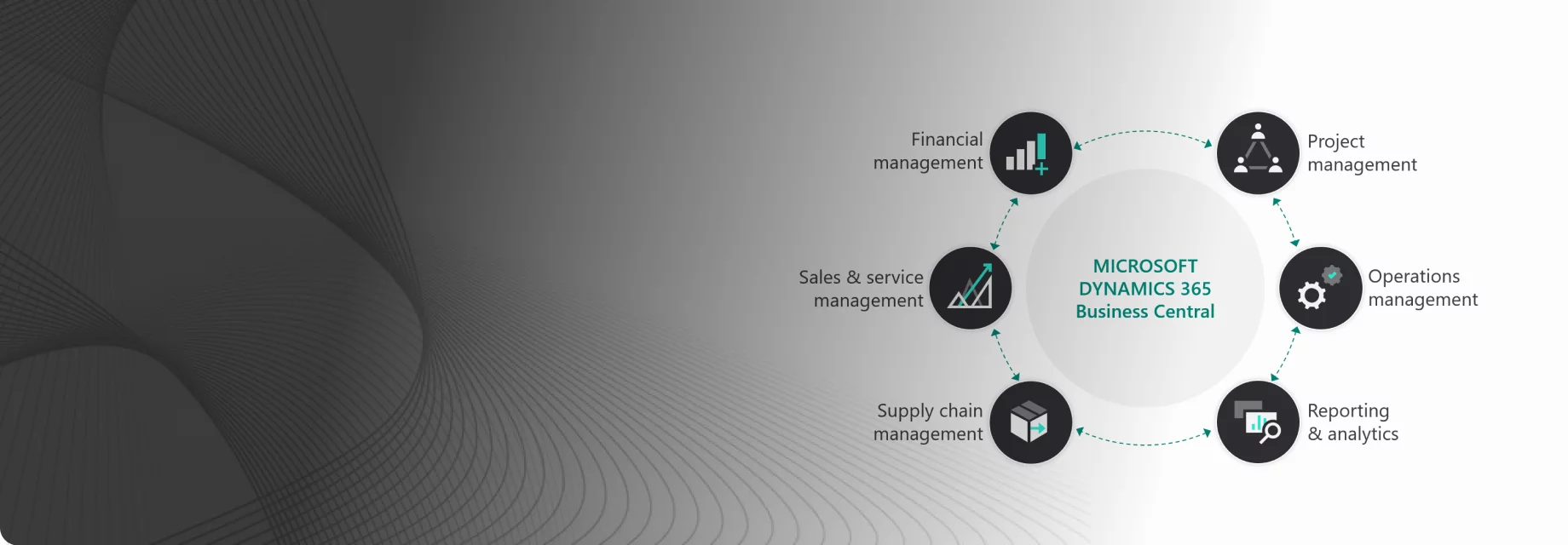Digital transformation is no longer just a trend; it’s essential for businesses in today’s world. While some companies are already leveraging modern technologies, others are held back by outdated systems that limit progress and stifle growth. This is where Microsoft Dynamics 365 Business Central ERP comes in. This powerful, cloud-based ERP solution is designed to provide scalability, flexibility, and efficiency, enabling businesses to not only stay competitive but also excel in the market. Understanding Business Central pricing is a key factor for businesses considering this solution. With flexible options available, businesses can find a Business Central pricing model that aligns with their specific needs and budget.
What Challenges Do SMBs Face with On-Premises ERPs?
Small and medium-sized businesses (SMBs) often encounter several limitations when relying on traditional on-premises ERP systems.
1. Security Challenges
-
- Vulnerability to Threats: Older ERP systems lack up-to-date security features, making them susceptible to cyber threats, data breaches, and malicious attacks. Protecting sensitive data effectively can be difficult for SMBs without significant investments in additional security measures.
- Compliance Risks: Outdated systems can jeopardize compliance with industry regulations and standards, leading to potential legal and financial consequences for SMBs.
2. Scalability and Flexibility Issues
-
- Limited Growth Support: As businesses grow, their ERP systems must scale accordingly. However, aging on-premises solutions often struggle to support expansion, limiting SMBs’ ability to grow or explore new markets.
- Rigidity: Traditional ERP systems often offer limited customization, making it difficult for SMBs to adapt the system to their specific needs. This rigidity can hinder innovation and agility.
3. Cost-Effectiveness Concerns
-
- High Maintenance Costs: ERP pricing is concerning as on-premises ERP systems require ongoing expenses such as hardware maintenance, IT staff, and upgrades. These costs can be a heavy burden on SMBs with tight budgets, especially compared to more affordable solutions like Microsoft Dynamics 365 Business Central.
- Obsolescence: Keeping outdated systems updated or replacing them is inflating the ERP Software price, and failure to do so may lead to inefficiencies and loss of competitive edge.
4. Data Management and Integration Limitations
-
- Data Silos: Older ERP systems often create data silos, where information is isolated and hard to access, limiting collaboration and effective decision-making.
- Integration Challenges: Outdated systems can be difficult to integrate with modern platforms, restricting SMBs’ ability to leverage new technologies that enhance efficiency and improve customer experiences.
5. Adaptability to Evolving Business Needs
-
- Inflexibility to Change: On-premise ERP systems are generally less adaptable to the changing business environment, making it harder for SMBs to stay competitive in a rapidly evolving market.
- Limited Support for Remote Work: As remote and hybrid work models become more common, businesses need ERP solutions that support flexibility. Outdated systems may lack the necessary capabilities, potentially affecting productivity and employee satisfaction.
Cost Savings and ROI with Microsoft Dynamics 365 Business Central
Businesses have seen substantial cost savings and financial advantages after implementing Microsoft Dynamics 365 Business Central, according to a Total Economic Impact (TEI) study by Forrester Consulting.
- Return on Investment (ROI): The TEI study showed an impressive ROI of 162% over three years for a typical company with $15 million in revenue and 250 employees. Another report indicated an even higher ROI of 172%, demonstrating the significant financial benefits businesses gain by migrating to Dynamics 365 Business Central.
- Net Present Value (NPV): The study revealed an NPV of $288,000 over three years, factoring in the costs and benefits of the migration, showcasing a strong net financial gain.
- Operational Efficiency and Labor Savings: By implementing Dynamics 365 Business Central, businesses avoided hiring an additional full-time and part-time staff member in finance and operations, leading to a 10% reduction in labor costs and more efficient use of resources.
- Improved Operational Flow: Organizations reported an 8% improvement in operational workflows, allowing staff to focus on higher-value tasks and enhancing overall productivity.
- Reduction in Reporting Costs: By utilizing Dynamics 365 Business Central and Microsoft solutions like Power BI, companies eliminated $44,000 in third-party reporting expenses over three years, thanks to the platform’s advanced reporting capabilities.
- Productivity Gains: Departments saw productivity increases of up to 30%, with automation functions saving around 20 hours per week on tasks like label creation, reducing errors and manual work.
- Quick Payback Period: Businesses recouped their initial investment in just 7 months, highlighting the rapid return on investment and cost-effectiveness of the solution.
Additionally, Dynamics 365 Business Central’s seamless integration enabled companies to create new sales channels, such as e-commerce, without compromising service quality. This scalability helped businesses expand their customer base and attract new clients, thanks to the ERP system’s agility and efficiency. This makes it a particularly attractive option for businesses seeking a low cost ERP solution that offers robust functionality and the potential for significant growth.
Factors Influencing Business Central Pricing: Migration & Implementation
Migrating to Microsoft Dynamics 365 Business Central involves various cost factors that businesses need to consider. These factors contribute to the overall Business Central ERP implementation cost and include the complexity of current systems, data migration requirements, and the level of customization needed. Understanding Business Central pricing is crucial for budgeting purposes, as it forms a significant part of the total investment alongside implementation costs.
1. Business Size and Complexity: The size of the business and the complexity of its operations significantly influence the cost. Larger organizations with more complex processes will likely face higher customization and implementation costs.
2. Existing Infrastructure: The condition of a business’s IT infrastructure can impact migration costs. Businesses with older systems may need additional effort for data cleaning and migration.
3. Level of Customization: The Microsoft Dynamics 365 implementation cost increases with the different levels of customization required by each business.
4. Integration Requirements: The need to integrate Dynamics 365 Business Central with existing applications, the state of the business’s current IT infrastructure can affect migration costs. Businesses with outdated systems may require more significant data cleansing and migration efforts.
Conclusion
The measurable benefits of Microsoft Dynamics 365 Business Central, from impressive ROI and cost savings to enhanced productivity and streamlined workflows, make it a valuable tool for businesses. SMBs can leverage these features to stay competitive, foster growth, and meet the demands of modern business. With its flexibility, strong security, and seamless integration capabilities, Dynamics 365 Business Central ensures that businesses are well-equipped to handle the complexities of today’s market while staying financially efficient. Understanding Business Central pricing is a key consideration for businesses evaluating its financial viability.
However, to fully harness the power of Dynamics 365 Business Central and ensure optimal return on investment from both the software and its implementation, partnering with an experienced solutions provider is essential. Intelegain Technologies, a leading Dynamics 365 partner, brings deep expertise and a proven history of successful implementations, helping businesses maximize the system’s capabilities for long-term success.
FAQs
How does Business Central improve supply chain efficiency?
By providing real-time visibility into inventory, demand forecasts, and supplier performance, Business Central helps optimize supply chain processes, reducing excess inventory and transportation costs.
How does Business Central’s automation reduce labor costs?
The platform automates routine tasks, such as order processing and reporting, reducing the need for manual labor and enabling businesses to allocate human resources more efficiently.
How does Business Central optimize procurement costs?
With its real-time procurement management capabilities, Business Central helps businesses track spending, identify cost-saving opportunities, and negotiate better deals with suppliers, reducing overall procurement costs.
Is customization possible during migration to Dynamics 365 Business Central?
Yes, Dynamics 365 Business Central allows for extensive customization to meet specific business needs, and this can be done during the migration process through its flexible configuration tools.












